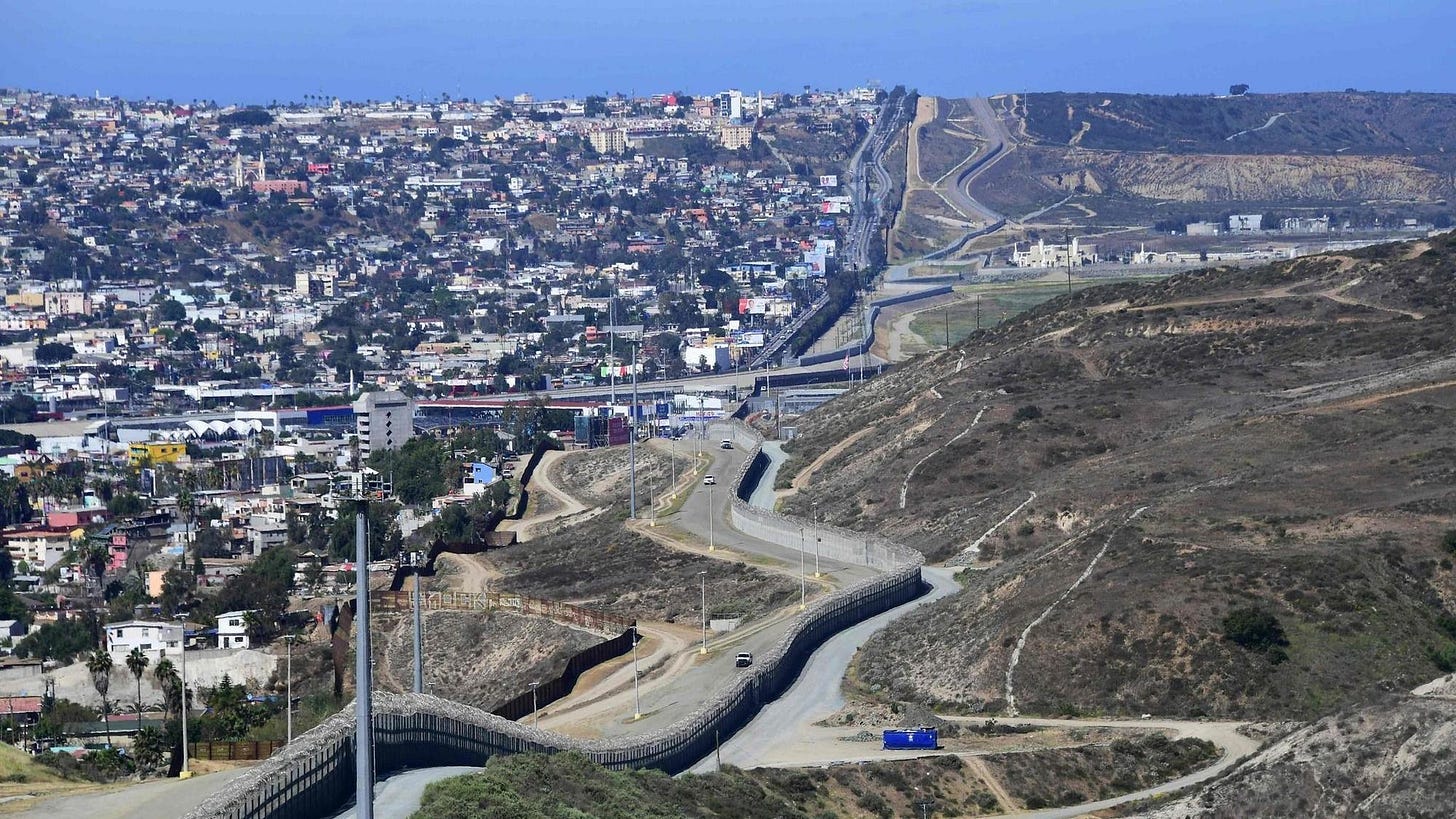Biden, the border wall, and why environmental regulations are on the chopping block (Part III)
The Biden administration is using a provision of the PATRIOT Act to expedite construction of Trump's border wall.
On Thursday, the fifth of this month, the Biden administration announced that it was waiving 26 cultural heritage and environmental protection laws to complete a section of the border wall along southern Texas. The waived laws include the National Environmental Policy Act, the Endangered Species Act, and the Native American Graves Protection and Repatriation Act.
Biden pledged that he would end the construction of Trump’s border wall. That was a campaign promise, so it was no surprise that condemnation from environmental and cultural groups was sharp and swift. These groups said that the wall would cut through public lands and critical habitat for endangered species, such as the ocelot. Laiken Jordahl, a Southwest Conservation Advocate for the Center for Biological Diversity, said, “It will stop wildlife migrations dead in their tracks. It will destroy a huge amount of wildlife refuge land. And it’s a horrific step backwards for the borderlands.”
Biden nonetheless justified having the laws waived by Alejandro Mayorkas, Homeland Security Department Secretary, by claiming that his administration’s hands were tied, the funding for the wall was already approved. Biden painted the situation as though he had no choice, saying:
“The border wall — the money was appropriated for the border wall. I tried to get to them to reappropriate it, to redirect that money. They didn’t. They wouldn’t. And in the meantime, there’s nothing under the law other than they have to use the money for what it was appropriated. I can’t stop that.”
Biden is right. This portion of wall is a fait accompli. Congress was not going to reappropriate the funds for it. But he did not have to waive over two dozen laws that protect our heritage and environment. Without the waiver, the wall still would have been built, but harm to watersheds, cultural sites, and habitats would have been mitigated.
Waiving laws to build border walls
The ability to waive a small number of environmental laws to build border walls goes back to 1996, with the passage of the Illegal Immigration Reform and Immigrant Responsibility Act. Waivers were granted to construct walls between San Diego and Tijuana, but the California Coastal Commission objected to the design, one that would fill in a canyon with millions of tons of dirt. Because of this delay, Congress included more abilities to waive laws in the Real ID Act of 2005. More and more laws were added to the chopping block in 2006 and 2008, allowing for at least 48 laws to be waived, including such bedrock legislation as the 1915 Migratory Bird Treaty. The George W. Bush and Donald Trump administrations waived laws several times during their administrations. Where I live, on two separate occasions, September 22, 2005, and April 8, 2008, Michael Chertoff, then Secretary of the Department of Homeland Security (DHS), waived first eight, then 36 laws, respectively, expediting the construction of border walls between San Diego and Tijuana. Biden’s waiver was the first time a Democratic administration used the provision.

When all these waivers were created, there was still a desire to comply with the larger legal framework. Bill Clinton expressed concern about the provision in 1996 when he signed the Illegal Immigration Reform and Immigrant Responsibility Act, pledging to comply with the larger laws and to consult with environmental agencies despite waivers. In his administration, Attorney General Janet Reno and Interior Secretary Bruce Babbitt voiced their agreement. Even George W. Bush’s administration completed an Environmental Impact Statement, a NEPA requirement, despite a Congressional waiver for the Tijuana wall.
The video above comprises photos I took one day exploring the wall east of San Diego. I composed and performed the music for the video and blogged about the experience here.
The problem
Regulatory and legal waivers are not bad, in and of themselves. They were invoked during World War II, and legal scholars have made the case that they give regulations flexibility beyond Congress’ ability to keep pace. The Obama administration used them widely.
The ability to waive laws to build a border wall is nonetheless problematic. Waivers are usually understood to be temporary and used in times of emergency, but the wall waivers have been around for a quarter century, far outlasting any period that this country could be considered to be in any emergency. Things like this also have a way of getting bigger than their original intentions. I can foresee waivers used to approve construction ten miles from the border, then 20, 30, or more.
In my previous postings in this series I’ve pointed to greed and conservative ideology as the culprits in the dismantling of our environmental laws. While I’m certain that conservatism and greed motivated many of the lawmakers to create these exceptions to the laws, that was far from the whole picture with these infringements. During the 2000s, the United States was way freaked out from the terrorist attacks of 2001. People started getting ideas that terrorists could cross the border from Mexico. Building a wall wouldn’t stop that, but politicians could point to a wall and claim that they were doing something about terrorism.






I think it is good that you are focusing on getting information out about a topic that is usually drenched in vituperation and bile from both directions. The more straightforward information we get the better.
There is also a more strategically political dimension to this issue of border/wall politics, however,. Readers here may or may not appreciate this recent piece in the TransAtlantic about the politics of walls and borders, particularly as it relates to the current situation in the US…
Do Our Political Elites Really Dislike Walls?
https://thetransatlantic.substack.com/p/do-our-political-elites-really-dislike